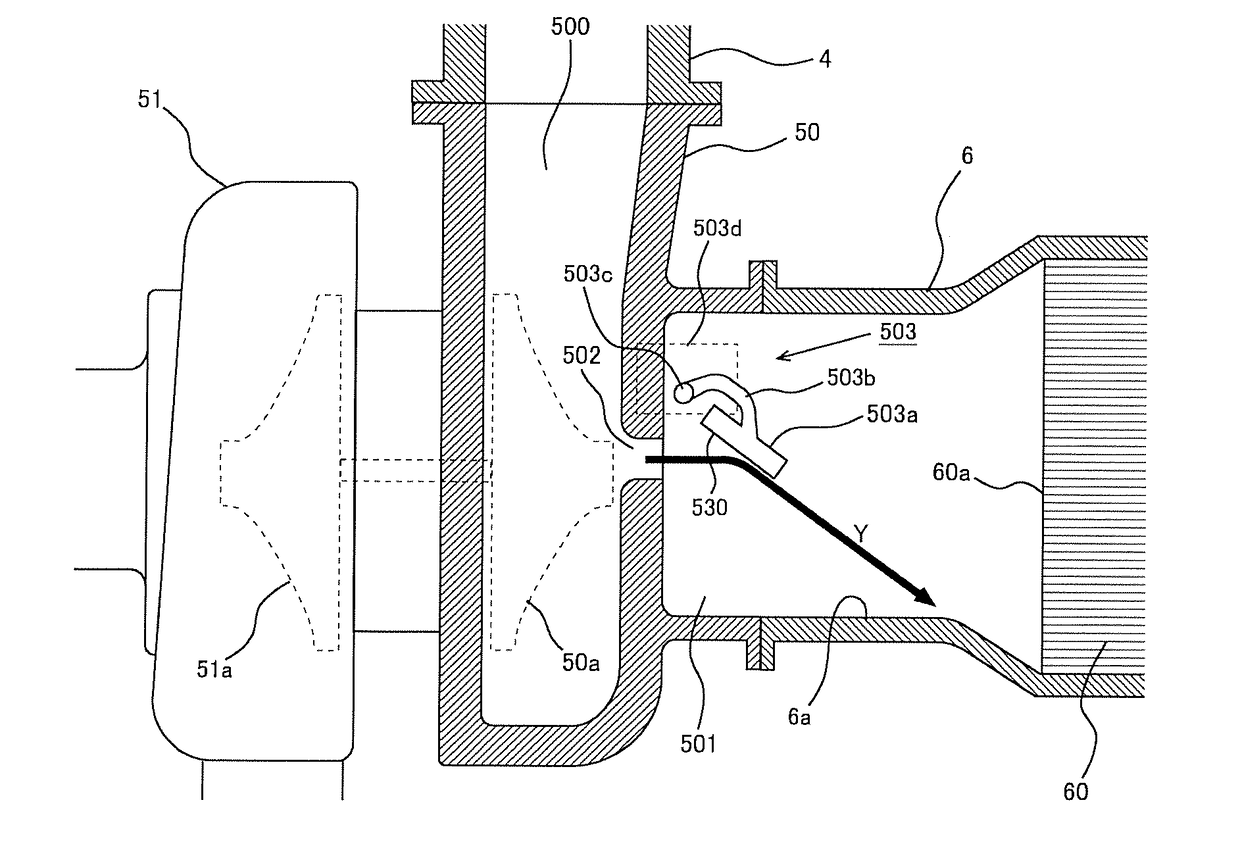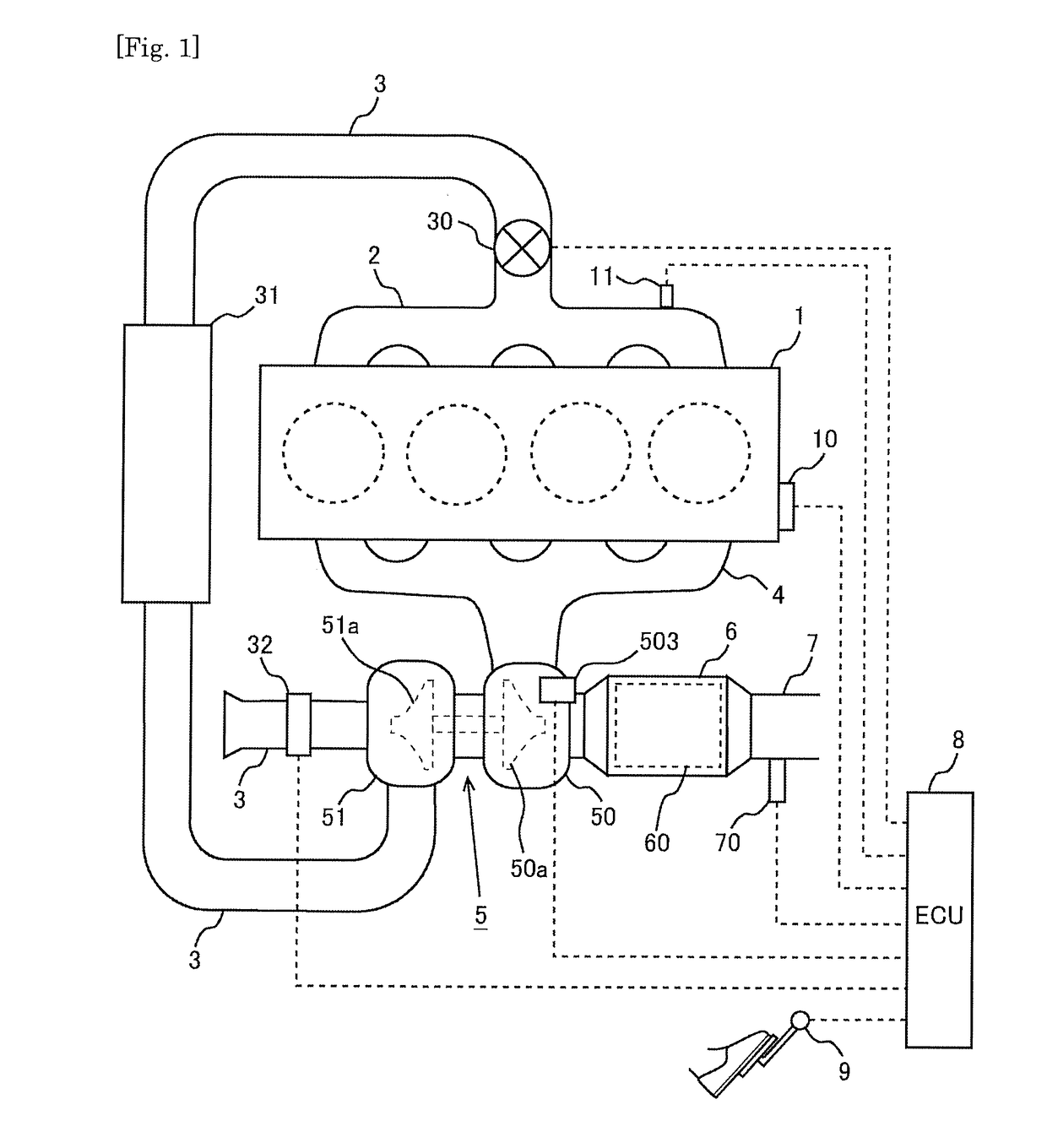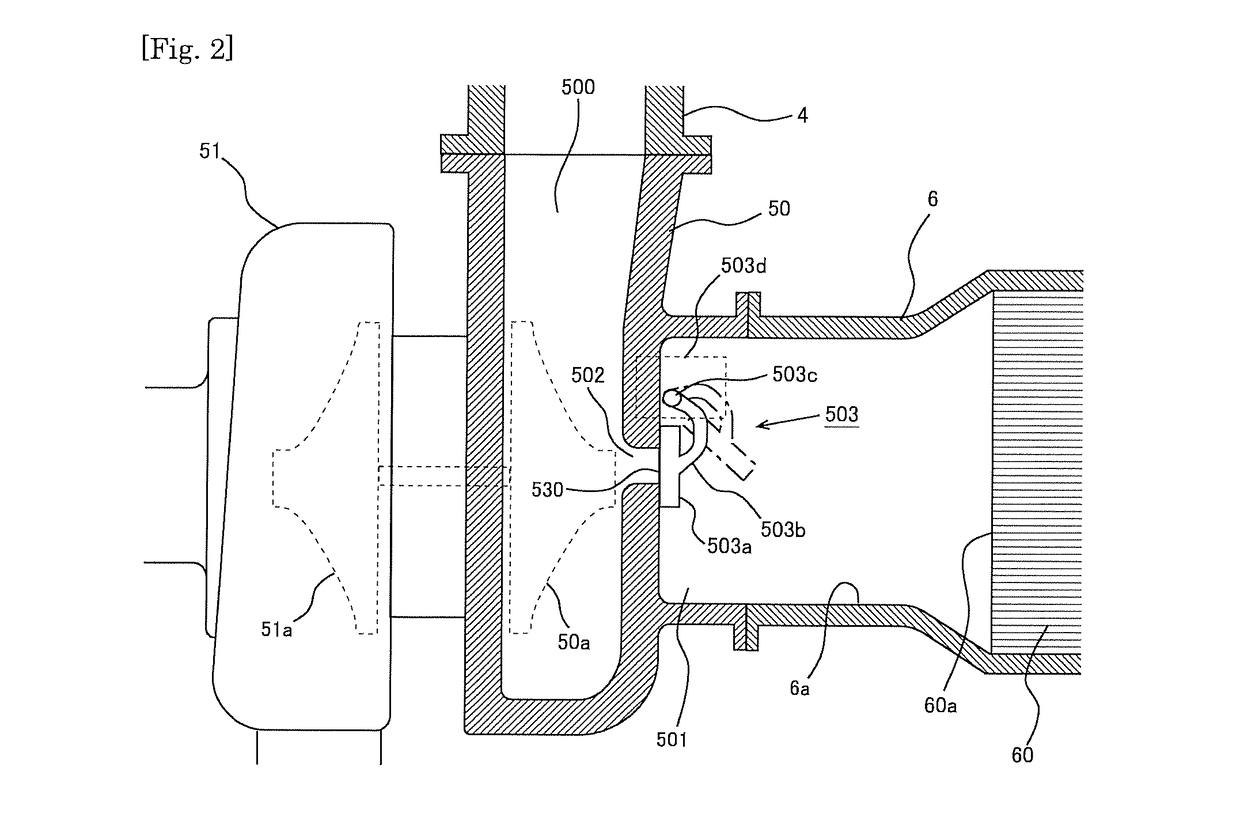Control apparatus for an internal combustion engine
a control apparatus and internal combustion engine technology, applied in the direction of electrical control, machine/engine, electric control of exhaust gas treatment, etc., can solve the problems of excessive temperature discharge of air sucked into internal combustion engine, and sintering of precious metal catalyst supported by the part, etc., to suppress the occurrence of thermal stress, sufficient cooling effect, and suppress the effect of unnecessary cooling of exhaust gas purification catalys
- Summary
- Abstract
- Description
- Claims
- Application Information
AI Technical Summary
Benefits of technology
Problems solved by technology
Method used
Image
Examples
embodiment 1
[0030]Reference will be made to a first embodiment of the present disclosure based on FIGS. 1 through 7. FIG. 1 is a view showing the schematic construction of an internal combustion engine to which the present disclosure is applied. The internal combustion engine 1 shown in FIG. 1 is a compression ignition type internal combustion engine (diesel engine) or a spark ignition type internal combustion engine (gasoline engine).
[0031]The internal combustion engine 1 is connected to an intake pipe 3 through an intake manifold 2. In the middle of the intake pipe 3, there is arranged a throttle valve 30 which serves to adjust the channel cross section of the intake pipe 3. A compressor housing 51 of a turbocharger 5 is arranged in the intake pipe 3 at the upstream side of the throttle valve 30. An intercooler 31 is arranged in the intake pipe 3 at a location between the compressor housing 51 and the throttle valve 30.
[0032]In addition, the internal combustion engine 1 is connected to a turb...
embodiment 2
[0053]In the above-mentioned first embodiment, the above-mentioned processing routine of FIG. 6 is carried out in a repeated manner during the execution of the fuel cut off processing, and hence, in cases where the temperature of the exhaust gas purification catalyst 60 has changed from a temperature less than the predetermined temperature Tpre to a temperature more than the predetermined temperature Tpre, or from a temperature more than the predetermined temperature Tpre to a temperature less than the predetermined temperature Tpre, in the course of the execution of the fuel cut off processing, the degree of opening Dwgv of the valve body 503a of the waste gate valve 503 will be changed. In contrast to this, the degree of opening Dwgv of the valve body 503a of the waste gate valve 503 during the fuel cut off processing execution may be fixed to a degree of opening corresponding to the temperature Tcat of the exhaust gas purification catalyst 60 at the time of the start of the fuel ...
PUM
 Login to View More
Login to View More Abstract
Description
Claims
Application Information
 Login to View More
Login to View More - R&D
- Intellectual Property
- Life Sciences
- Materials
- Tech Scout
- Unparalleled Data Quality
- Higher Quality Content
- 60% Fewer Hallucinations
Browse by: Latest US Patents, China's latest patents, Technical Efficacy Thesaurus, Application Domain, Technology Topic, Popular Technical Reports.
© 2025 PatSnap. All rights reserved.Legal|Privacy policy|Modern Slavery Act Transparency Statement|Sitemap|About US| Contact US: help@patsnap.com



